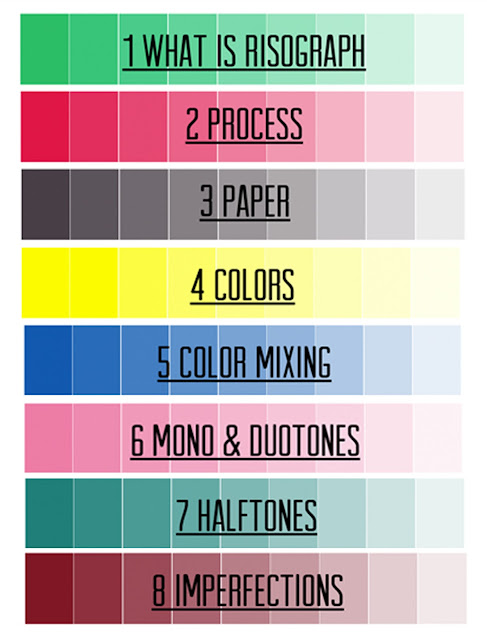Collaborative Practice 7002MALSAD
Thursday, 31 March 2016
Tuesday, 29 March 2016
Reflections 29.03.16
Today we
completed the publication. We used the industrial guillotine to cut 5mm of each
edge. After our difficulties with the alignment we had to make a compromise
with the accuracy of the final publication. Our design used the edges and folds
to dissect the atoms and graphs into pleasant and unpleasant sounds. The
downside to this was that the lack of accuracy meant that a 5mm crop would cut
some of the information away. We had to decide between cutting each sheet
individually or biting the bullet and cutting them as a stack. Cutting each
sheet creates a series of other problems in maintains an accurate A format for
the folding to work properly and obviously time. As a group we decided to use
the industrial guillotine and cut 5mm of each edge despite the potential loss
of information. The information would still be readable and the publication
would still be a nice object to hold, interact with and display. It would just
be missing some of the exact finer points of information.
The industrial
guillotine was a bit temperamental in the beginning but eventually we were able
to cut everything to size. Each publication had 7 folds, each of those created
a potential accuracy issue. Not only that but the ink, although dry, smudged
during the folding process, especially the darker colours and any heavily
saturated areas. I think we would have kept to the graphs and atoms and
abandoned the block colours in hindsight. We folded 40 publications and decided
to pick the best 30 from this to ‘publish’ as a numbered edition for submission
and distribution to participants.
It was difficult
to let the accuracy of the final publication slip but it was a necessary
casualty of the module. During this project we have front-loaded a lot of the
organization, workload and ‘exhibition’. As the project comes to an end its
easy to forget the volume of research and work that has already gone into the
project. However, because I am a perfectionist, I was a bit disappointed that
we were not able to create a totally accurate representation. Having said that
the qualities of the Risograph print are a total redeemer in terms of
exploration of a new process and the haptic qualities of the final publication.
I think I would have felt more confident if we had explored Risograph printing
more thoroughly. Certainly we could have made it a lot easier for ourselves in
the printing stages of the work. In our complicated design, we created too many
variables, each with the potential to go wrong and affect the next. That’s not
to say that we have not achieved a great deal with this project, certainly in
terms of developing our understanding of our own process through collaboration.
When else would you have to opportunity to actively try something totally out
of your comfort zone and skill base.
Friday, 25 March 2016
Leah Stewart
Leah Stewart uses Risographs as part of an exploration of natural studies, including monoprints and etching. Her prints are a visual delight of mark making and colour.
Created as part of the Yuck Printhouse pop up show at the Manchester Craft and Design Centre. Printed by Hato Press
For more of her inspirational work go to www.leahstewart.co.uk or the Hato Press
Vessels
3 Colour Risograph
2013
Created as part of the Yuck Printhouse pop up show at the Manchester Craft and Design Centre. Printed by Hato Press
Heath
Risograph print of the meadow in the Ladies Pond, Hampstead Heath.
3 Colour Risograph
2013
For more of her inspirational work go to www.leahstewart.co.uk or the Hato Press
Risograph pt.2
Alice Bowsher - Curious
Emily Rand - Cities
Jack Taylor print
Emily Rand - Trees
All books and prints available at through Hato Press
Subscribe to:
Comments (Atom)

















